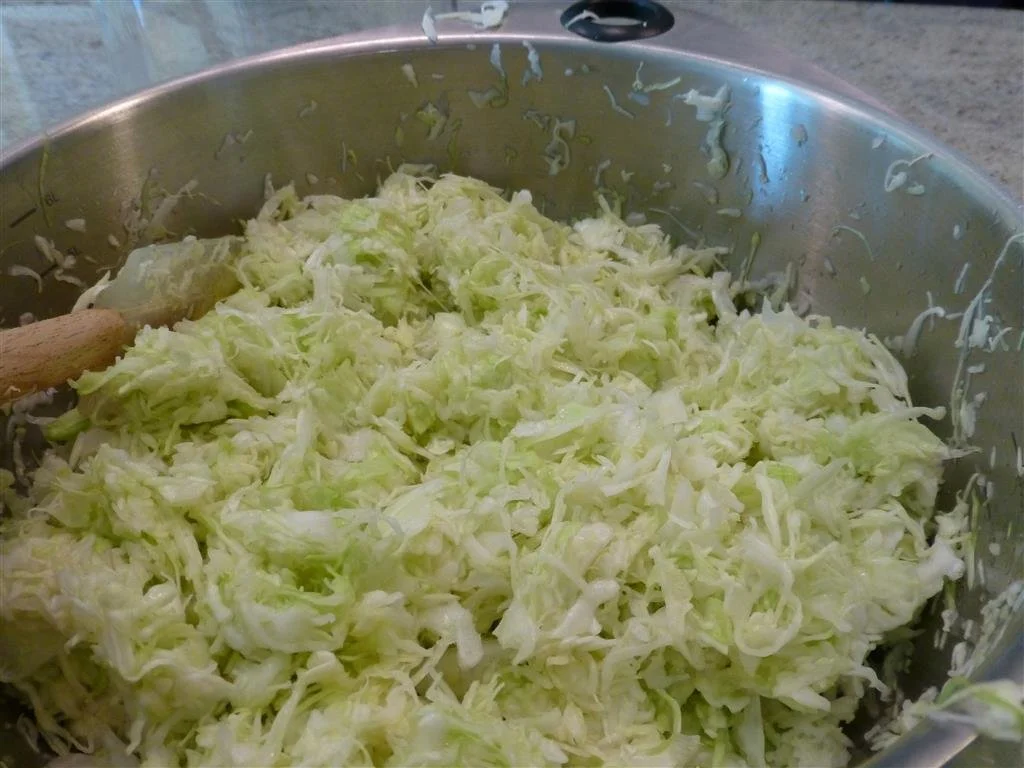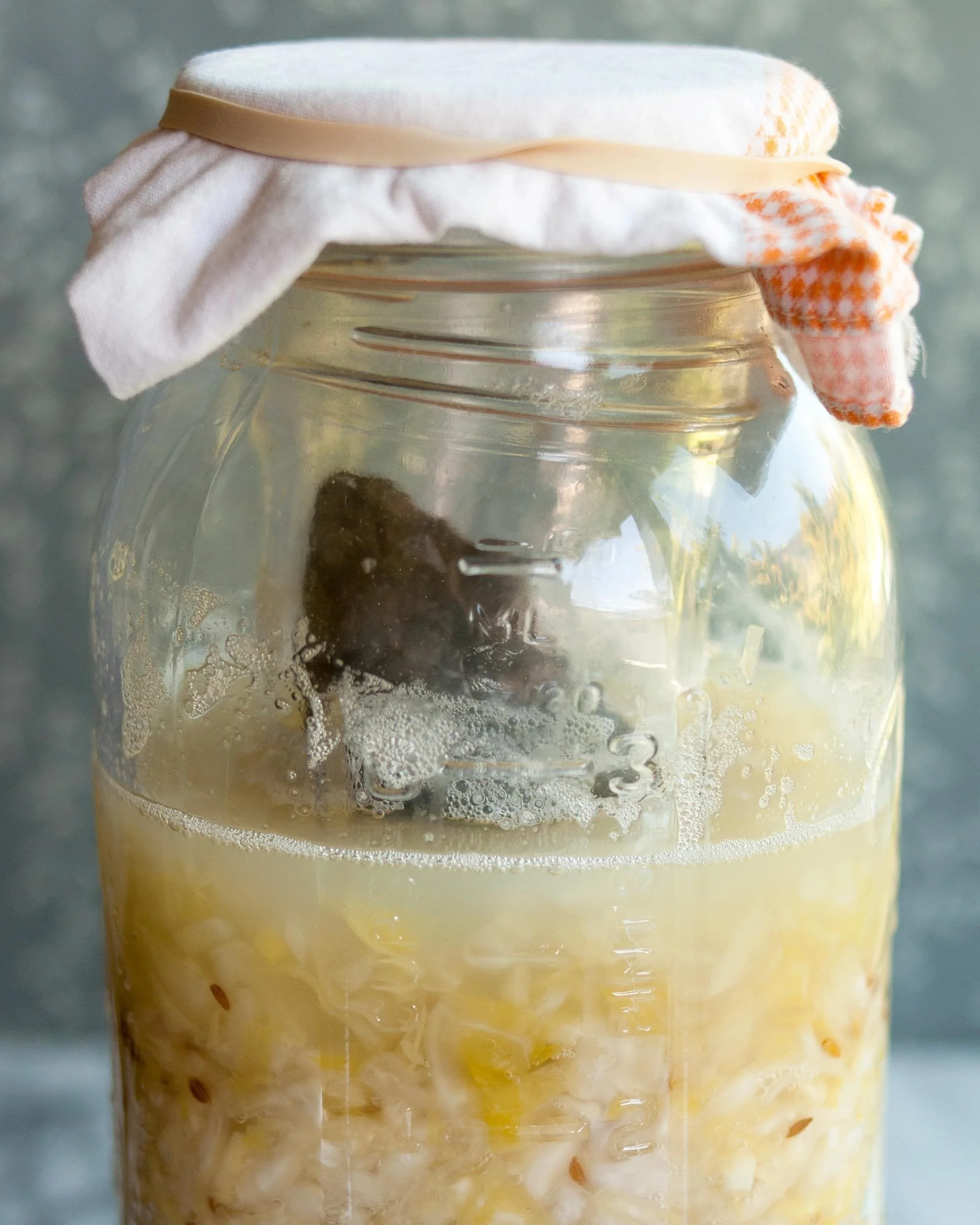Sauerkraut & Storytelling
photo source https://www.unileverfoodsolutions.com.au/recipe/sauerkraut-hotdog-R0076977.html
In today’s post, I share a bit about craving sauerkraut and Stacey shares about her storytelling experience at The Sierra Storytelling Festival.
Why Sauerkraut?
Do you put kraut on your hot dogs or bratwurst? Did you every wonder where such a combo originated and why? I recently went through some pretty serious sauerkraut cravings...and I wondered why.
I’ve always liked sour things. As kids, my brother and I snacked on vinegar. We would half-fill a small cup with vinegar and grab a handful of carrot sticks from the fridge. Then we would sit on the sofa and dip the carrot sticks into the vinegar and then suck the vinegar off the carrot. Although, we ate the carrot, the best part was the vinegar. We also loved sour pickles. Instead of peanut butter and jelly, we made pickle sandwiches with bread, mayo and thin slices of pickles. It is better than it sounds.
Last winter when Shan taught our cooking class at Ohmapi, she served locally made sauerkraut (Local Culture) and creme fresh with EVERY meal. As a lover of sour things, I put a large scoop of sauerkraut on every meal Shan and the students prepared. Most of our meals were soup (a good thing to cook with kids). Prior to that, I had never put sauerkraut in soup. But I tried it and noticed how extra delightful it made the already great soup.
As our semester neared its end, I decided to use up the large head of cabbage that had been in the fridge for months and make some sauerkraut. It had been years since I made my own sauerkraut. But I decided to make some anyway. Making sauerkraut is quite easy and a great thing to do with kids (see recipe below).
A few weeks later, after the school year had ended, I opened the fridge and saw the freshly made sauerkraut and felt a strong craving for it. I was no longer getting my weekly serving of sauerkraut with Shan and I craved it. Delighted to have a big half gallon of kraut in the fridge, I readily ate some. Everyday after that, I ate sauerkraut on or with a meal...EVERYDAY. I put it on salads. I put it in quesadillas. I put it on bratwurst. I took notice this craving and realized my body was telling me something.
Sauerkraut is good for you. It is a fermented food and is full of probiotics. Shan explained to me one day that a tablespoon of sauerkraut is equal to a whole bottle of probiotics. Sauerkraut promotes healthy gut flora, boosts your immune system, reduces stress to maintain brain health and contributes to stronger bones and more.
After about 3 weeks of eating a few tablespoons of sauerkraut per day, I noticed I was a bit gassy. I wondered why as I hadn’t eaten anything out of the ordinary. And then I recalled I was eating sauerkraut everyday and cabbage has a tendency to make people gassy. Perhaps my body was telling me something new.
It is amazing how our bodies communicate to us if we listen. Parents are often too busy to listen to their bodies. Raising kids is a lot of work. Working full-time is a lot of work. Many parents do both. With tending to so many things, it can be challenging to hear our own bodies when they are trying to communicate with us. Luckily for us, our bodies are truly remarkable and are quite patient. Our bodies tolerate a lot and do their best to keep us going even when we ask too much of them. They are kind of like parents in that way. They keep forgiving us. They let us make mistakes. They tolerate junk food and alcohol. They let us be weekend warriors, etc...They let us try again and again. And they try to guide us in discovering things about our bodies for our selves. Yet sometimes, if we push our bodies too far, too hard, we get sick and then our bodies force us to listen to them by making us stay in bed.
And so my take away from my recent sauerkraut cravings, is that I needed more fermented foods in my diet. Maybe I needed the probiotics. Perhaps it was because I had stopped eating yogurt over the past few years. Or because I had taken antibiotics twice in the past few years. Maybe those were or weren’t the reasons. I’ll never know for sure...
And my other take away, when I developed gas, is that I had enough sauerkraut. Perhaps a few tablespoons everyday was more than my body wanted. Maybe a few times a week is good. I’m sure the “right” amount varies as our lives change, activities change and other things in our diet change.
Our ancestors knew about fermented foods. So many cultures, from the ancient Greeks to Asia, have traditional fermented foods in their diets. Fermenting foods was a way to preserve foods. The lacto bacteria that develops in fermented foods keeps them from rotting. Lactic acid is a natural preservative that inhibits putrefying bacteria. Starches and sugars in vegetables and fruits are converted into lactic acid by the many species of lactic-acid-producing bacteria. In sauerkraut, the bacteria comes from the air. The ancient Greeks understood that important chemical changes took place during this type of fermentation. Their name for this change was “alchemy”. If you want to learn more about fermented foods, check out the Weston A. Price Foundation.
So the next time your kiddo asks for sour candies like sour patch kids, maybe their bodies are telling them they need a fermented food. Instead of caving in or denying them a sugary dye-laden “treat”, try giving them a handful of carrot sticks and a cup of naturally fermented vinegar (like Bragg’s) and see what happens.
Make your own Sauerkraut
photo from: thespruceeats.com
Ingredients
1 medium green cabbage
1 tablespoon of non-iodized salt like finely milled sea salt, pickling salt, kosher salt, Celtic grey salt, Korean brining salt, and Himalayan pink salt.
Equipment:
Wide mouth mason jar ready or similar.
4 or 8 ounce “jelly” jar that fits inside your wide mouth jar.
Directions
Discard the outer leaves of your cabbage, setting one nicer big whole leaf aside. Then, slice the cabbage into quarters, leaving the core in. This makes shredding easier.
Shred the cabbage quarters into the large bowl.
Add salt and massage it into the cabbage mixture for a five - ten minutes until brine starts accumulating at the bottom of your bowl.
Pack the cabbage mixture into a clean, the mason jar, pressing down to get rid of air pockets. Pour the remaining brine into the jar. Air in the jar enables harmful bacteria to grow, so make sure the mixture is completely submerged.
Trim the cabbage leaf you set aside earlier to the size of your jar opening. Place it in the jar on top of the mixture to prevent veggies from floating to the surface.
Place the 4 or 8-ounce jelly jar with no lid inside the larger jar, on top of the mixture and fill it with water or a rock to weigh it down. This will hold your veggie mixture below the brine during fermentation.
If there is room, screw the lid onto your wide mouth mason jar. It will press the jelly jar down, keeping your cabbage mixture below the brine. Leave the lid slightly loose, which will allow gases to escape during the fermentation process. If the lid, does not fit, that’s ok too. Set the sauerkraut on a plate in case some of the fermentation bubbles over the edge of the jar.
Keep it at room temperature and out of direct sunlight for 1–4 weeks. It will be ready to eat after about 7 days. When the taste is to your liking, remove the small jar, and store in the fridge with the lid on.
Storytelling
This post is from our very own Ohmapi instructor Stacey Anderson. I’m delighted to share that Stacey will be a regular contributing writer going forward. This post is about Stacey’s own experience telling a story at the Sierra Storytelling Festival. Our humble Stacey doesn’t mention how she did in the story slam competition. She tied for second place! That’s pretty awesome for her first time competing. Congratulations Stacey.
Storytelling is a unique human experience, an art form and way of learning that we all share, no matter where we're from. It is a magical part of the rhythm of our day at Ohmapi; children from all the grades gather together after game time to sit in the grass to hear a story that introduces a new character in our local ecosystem. As we introduce new characters, beloved familiar characters reappear and grow and develop in the childrens' imaginations.
Possibly one of my favorite events that I have ever attended is our local Storytelling Festival, which has been happening every summer at the North Columbia Schoolhouse, an absolute gem of a venue, since 1987. The event offers 2 nights of storytelling in an outdoor venue, featuring 5 professional storytellers from around the world and showcasing one of our many talented local storytellers.
During the daytime a storytelling workshop is offered, a worldclass children's story hour is offered, as well as opportunities for curious and brave amateur storytellers to get on a small stage in the historic schoolhouse and practice telling a story in front of an audience. There is an open-telling event that encourages tellers to tell stories of any kind, as long as it is within a 5-minute limit, and there is a storyslam event that invites tellers to tell a story inspired by a particular theme that is 5 minutes or less. The storyslam is judged by audience members and the winner receives tickets for next year's festival.
This was my fourth year attending the storytelling festival, and my first year not attending the storytelling workshop. I was sad to miss the workshop, but I challenged myself to be courageous and expand my storytelling experience beyond the Ohmapi classroom and enter into the storyslam. The theme this year was "Course Correction" and I told a personal story about what it was like growing up in a small town in the deep south. There is no audience as sweet as our students, but this audience was generous and kind with their applause, and it filled my heart to see friends in the audience.
I highly recommend checking out the Sierra Storytelling Festival website, https://www.sierrastorytellingfestival.org/, and getting on their email list to stay in the loop for next year's dates. Maybe I will see you on stage a tthe storyslam!







